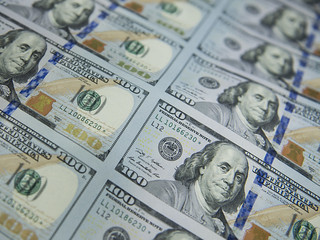
PREV ARTICLE
NEXT ARTICLE
FULL ISSUE
PREV FULL ISSUE
ARTICLES INTERVIEWS CRANE CURRENCY ENGINEEROn a related topic, here's an October 23, 2017 piece from National Public Radio's All Tech Considered about a banknote anti-counterfeiting method developed by
Crane Currency. -Editor
At his interview, he was shown something that blew his mind. Cape says it looked like film but was three-dimensional and appeared to be moving. It was in fact a prototype of a micro-optics technology he would go on to refine as the director of research and development for Massachusetts-based Crane Currency. Crane's history dates to the American Revolution. When Paul Revere prepared to take his famous midnight ride to warn of the approach of the British, he stabled his horses at a paper mill owned by Stephen Crane, who was also a freedom fighter. When the War of Independence broke out, Revere engraved the first printing plates, and Crane supplied the paper for the bank notes used to pay soldiers. In 1879, Crane won a contract from the U.S. Bureau of Engraving and Printing to produce the paper for federal bank notes, which it has been doing ever since. The company's motion technology has been woven into every $100 bill since 2013. Cape says the technology uses microscopic lenses so tiny you can fit about a dozen of them on the tip of a human hair. Nearly 1 million of these lenses are used to magnify underlying microimages on each of the newest $100 bills. The result is a visual illusion that looks a bit like the old 3-D tilt cards you might find inside a box of Cracker Jack. It's one of more than a dozen stunning visual effects that also include a second, larger bell in an inkwell that shifts in color as it appears and disappears, and a security thread to the left of Franklin's portrait that glows pink when illuminated by ultraviolet light. Crane's motion technology is in use in more than 100 denominations worldwide, and Cape says further refinements are in the pipeline that will allow for larger images and more engaging three-dimensional effects. Imagine the Founding Fathers walking across the bills in your wallet or waving at store clerks when you go to make a purchase. Short movies may be possible, even interactive games — quick bursts of animation with striking effects. To read the complete article, see:  Wayne Homren, Editor The Numismatic Bibliomania Society is a non-profit organization promoting numismatic literature. See our web site at coinbooks.org. To submit items for publication in The E-Sylum, write to the Editor at this address: whomren@gmail.com To subscribe go to: https://my.binhost.com/lists/listinfo/esylum All Rights Reserved. NBS Home Page Contact the NBS webmaster 
|
